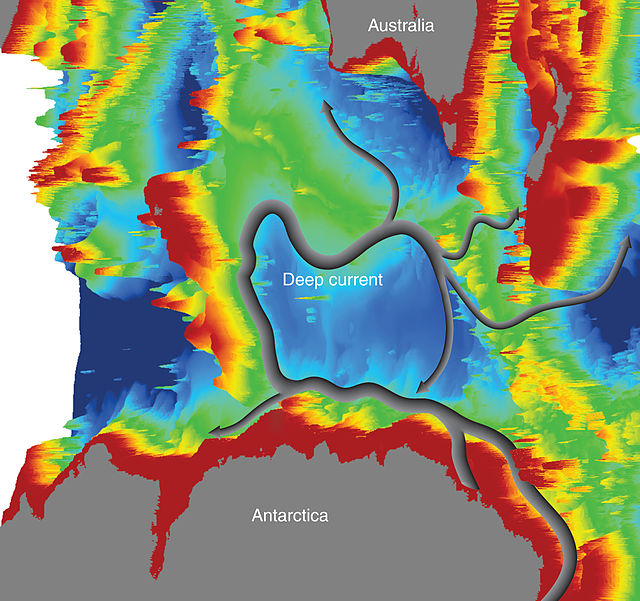The California Current is a cold water Pacific Ocean current that moves southward along the western coast of North America, beginning off southern British Columbia and ending off southern Baja California Sur. It is considered an Eastern boundary current due to the influence of the North American coastline on its course. It is also one of six major coastal currents affiliated with strong upwelling zones, the others being the Humboldt Current, the Canary Current, the Benguela Current, the Oyashio Current, and the Somali Current. The California Current is part of the North Pacific Gyre, a large swirling current that occupies the northern basin of the Pacific.
The lack of clouds along the coast (and also along the Central Valley of California) is due to an offshore wind blowing drier air from the land offshore.
Upwelling process off the coast of California bringing cooler, nutrient rich water up to the surface.
An ocean current is a continuous, directed movement of seawater generated by a number of forces acting upon the water, including wind, the Coriolis effect, breaking waves, cabbeling, and temperature and salinity differences. Depth contours, shoreline configurations, and interactions with other currents influence a current's direction and strength. Ocean currents are primarily horizontal water movements.
The bathymetry of the Kerguelen Plateau in the Southern Ocean governs the course of the Kerguelen deep western boundary current, part of the global network of ocean currents.
Coupling data collected by NASA/JPL by several different satellite-borne sensors, researchers have been able to "break through" the ocean's surface to detect "Meddies" – super-salty warm-water eddies that originate in the Mediterranean Sea and then sink more than a half-mile underwater in the Atlantic Ocean. The Meddies are shown in red in this scientific figure.
A recording current meter





